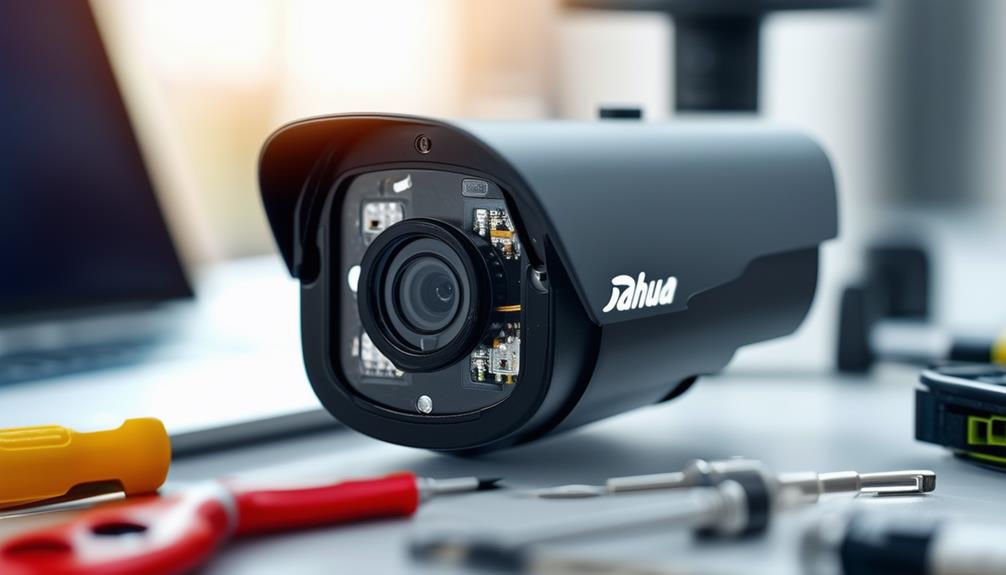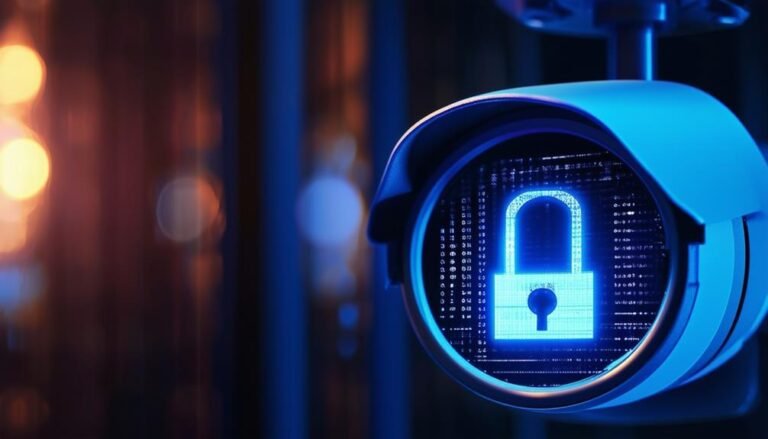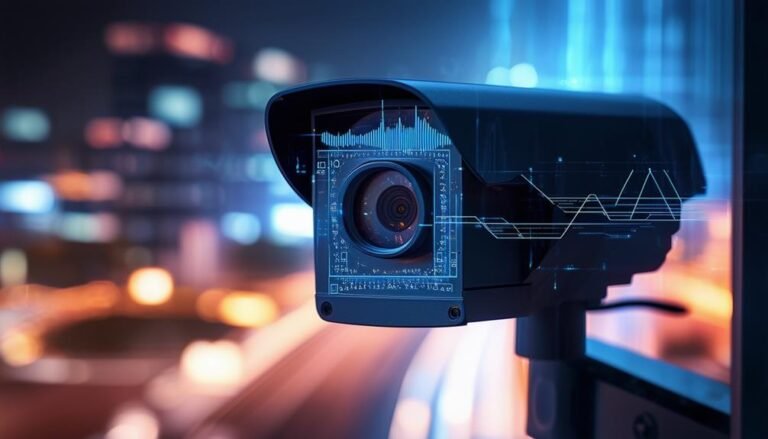To reset your Dahua IP camera to factory default, first, power off the device. Locate the reset button on the back or bottom of the camera. Press and hold this button while turning the camera back on, keeping it pressed for about 10-15 seconds. Release the button when you see the status indicator light change. This process will restore original settings and clear any customized configurations. After resetting, you'll need to reconfigure your camera. If you'd like guidance on setup and troubleshooting, there's more useful information available to help you get everything running smoothly.
Understanding Factory Reset
When you need to reset your Dahua IP camera, understanding the concept of a factory reset is crucial. A factory reset fundamentally restores your camera to its original settings, wiping away any custom configurations you've made. This can be a liberating process, especially if you feel trapped by settings that no longer serve your needs or if you're facing connectivity issues.
The beauty of a factory reset lies in its simplicity. You're fundamentally giving your device a fresh start, clearing any stored data, passwords, or preferences that may have become a burden over time. It's like hitting the reset button on your freedom, allowing you to reclaim control over your security setup.
Keep in mind that a factory reset isn't just about erasing your customizations; it also means you'll need to set everything up again from scratch. This might sound intimidating, but think of it as an opportunity to create a configuration that truly aligns with your current needs. You can tailor your settings to better fit your lifestyle, enhancing both security and ease of use.
Whether you're troubleshooting an issue or simply seeking a new direction for your camera's functionality, understanding how a factory reset works gives you the power to navigate your options confidently. Embracing this reset can lead to a more efficient and satisfying experience, allowing you to enjoy the freedom that comes from having your Dahua IP camera work exactly how you want it.
Preparing for the Reset
Before you plunge into the reset process, it is essential to gather everything you need to guarantee a smooth changeover. It may seem simple, but being prepared will save you time and frustration. Here's a checklist of essentials to have on hand:
| Item | Purpose |
|---|---|
| Power Adapter | Ensures your camera stays powered during the reset |
| Ethernet Cable | For connecting your camera to the network |
| Computer or Smartphone | To access the camera's settings post-reset |
Make sure your camera is plugged in and stable. You don't want it to lose power midway through the reset. If your camera uses Wi-Fi, you might want to have your Wi-Fi credentials ready, as you'll need them to reconnect afterward.
Additionally, it's a good idea to back up any important settings or configurations. While the reset will restore factory settings, if you have specific configurations, writing them down or taking screenshots can save you from having to guess later.
Locating the Reset Button
To reset your Dahua IP camera, the first step is to locate the reset button, which is typically found on the back or bottom of the device. This button is essential for restoring your camera to its factory settings, giving you the freedom to start fresh. Here's how you can find it:
- Check the Back Panel: Most Dahua cameras have the reset button easily accessible on the back panel. Look for a small hole or a button that might be labeled "Reset."
- Look Underneath: If you don't find it at the back, flip the camera over. Sometimes, the reset button is located on the bottom. It could be hidden under a sticker or cover, so inspect carefully.
- Consult the Manual: If you're still having trouble, grab the camera's user manual. It usually has a diagram showing the exact location of the reset button, guiding you to it without hassle.
- Online Resources: Sometimes, a quick online search can provide images or videos from fellow users who've documented their experience. This can be especially helpful if you're facing a unique camera model.
Once you've located the reset button, you'll be one step closer to reclaiming control over your Dahua IP camera. Embrace this chance to reset and refresh, and enjoy the freedom that comes with a clean slate!
Powering Off the Camera
After locating the reset button, the next step is powering off the camera. To do this, you'll need to disconnect the power supply. If your camera is plugged into an electrical outlet, simply unplug it. If it's powered through a PoE (Power over Ethernet) connection, you'll want to unplug the Ethernet cable from the switch or injector. This guarantees the camera is completely off, which is essential for the reset process to work properly.
While it might seem straightforward, make certain to take your time. Rushing could lead to mistakes, and we all know how frustrating it is when things don't go as planned. Once you've disconnected the power, give it a moment. This brief pause allows any residual energy to dissipate, preparing the camera for a clean reset.
It's also a good idea to double-check that the camera has fully powered down. Look for any indicator lights; if they're off, you're ready to move forward. This step is about creating a blank slate, giving you the freedom to set things up anew without any lingering issues from previous configurations.
In a world where we often feel tied down by technology, taking control of your devices is empowering. So, verify the camera is off, and take a deep breath. You're one step closer to reclaiming full control over your Dahua IP camera.
Performing the Reset
With the camera powered off, you can now proceed to perform the reset. This process allows you to restore your Dahua IP camera to its factory settings, giving you a clean slate to work from. Here's how you can do it step by step:
- Locate the Reset Button: Find the reset button on your camera. It's typically a small, recessed button that requires a pin or a similar object to press.
- Press and Hold: Using a pin, press and hold the reset button. You'll need to keep it pressed for about 10-15 seconds.
- Power On the Camera: While holding the reset button, turn on the power to the camera. This is essential, as you want the reset process to start while the button is still held down.
- Release the Button: After holding the button for the specified time and powering on the camera, release the reset button. The camera should begin its reset process, and you'll notice the status indicator light may change or flash.
This simple yet effective method guarantees that your Dahua IP camera resets properly, allowing you the freedom to reconfigure it as needed. It's a straightforward way to regain control over your device, especially if you've encountered any issues or forgotten the settings. Now you're one step closer to reclaiming your camera's functionality!
Reconfiguring Your Camera
Now that your Dahua IP camera has been reset, it's time to reconfigure your settings to suit your needs. Begin by connecting your camera to your network. Use an Ethernet cable or connect it wirelessly, depending on your setup. Once it's powered on, access the camera's web interface through your browser by entering the camera's IP address, which you can find in the user manual or via your network's device list.
Next, log in using the default credentials—usually something like admin for the username and a blank password or '123456'. It's essential to change these defaults right away to safeguard your privacy. After logging in, navigate to the settings menu. Here, you can customize various aspects, such as video resolution, frame rate, and compression formats to optimize performance.
Don't forget to set up motion detection and alerts if you want to monitor specific areas or receive notifications when activity is detected. You can also adjust sensitivity settings to avoid unnecessary alerts from minor movements.
For those who value freedom, explore the advanced settings. You can configure remote access and integrate your camera with other smart home devices. Setting up cloud storage or an FTP server can give you peace of mind, knowing your footage is safely backed up.
Troubleshooting Post-Reset Issues
After resetting your Dahua IP camera, you might run into a few common issues that can be frustrating. It's important to check your network settings and guarantee everything's configured correctly. Additionally, you may need to update the firmware to get your camera running smoothly again.
Common Post-Reset Problems
Resetting your Dahua IP camera can sometimes lead to unexpected issues, leaving you frustrated if things don't go as planned. It's crucial to be aware of common post-reset problems that may arise. Here are four issues you might encounter:
- Camera Not Responding: After a reset, your camera might seem unresponsive. This could be due to a power issue or a malfunction during the reset process.
- Default IP Address Conflicts: The camera may revert to a default IP address. If another device on your network uses the same address, you'll experience connectivity issues.
- Loss of Settings: You might find that some settings, like motion detection configurations, are reset to their factory defaults, requiring you to set them up again.
- Firmware Problems: If the firmware version is outdated or incompatible, you might run into bugs that affect performance.
If you face these issues, don't lose hope. Most problems can be resolved with a little troubleshooting and patience. Embrace the freedom that comes with managing your camera effectively!
Reconfiguring Network Settings
Once you've reset your Dahua IP camera, it's essential to reconfigure the network settings to guarantee peak performance. Without the right configuration, you might face connectivity issues that could prevent you from accessing your camera remotely. Start by connecting your camera directly to your router using an Ethernet cable. This wired connection will help you establish a stable link during the setup process.
Next, access the camera's web interface by entering its default IP address in a browser. From here, you can log in using the default username and password, usually found in the user manual. Once logged in, navigate to the network settings section. Here, you'll want to assign a static IP address to make sure your camera's address doesn't change after a reboot.
Make sure to input the correct subnet mask, gateway, and DNS settings tailored to your network. After saving these settings, disconnect the Ethernet cable and connect your camera to Wi-Fi if applicable. Always test the connection afterward by accessing the camera's feed remotely. By reconfiguring the network settings correctly, you'll enjoy seamless access and full control over your Dahua IP camera.
Firmware Update Procedure
If you encounter issues accessing your Dahua IP camera after reconfiguring the network settings, a firmware update might be necessary to resolve any lingering problems. Updating the firmware can restore functionality and enhance performance. Here's how to do it:
- Download the Latest Firmware: Visit the Dahua website and find the correct firmware for your camera model.
- Prepare Your Camera: Confirm your camera's powered up and connected to your network.
- Access the Camera Interface: Open a web browser and log in to your camera's interface using the IP address.
- Upload the Firmware: Navigate to the "Firmware Upgrade" section, select the downloaded file, and initiate the update.
After following these steps, your camera should reboot automatically. If it doesn't, consider performing a manual reboot. Remember, keeping your firmware updated not only fixes issues but also adds new features and security enhancements. Don't hesitate to reach out to Dahua support if you still face problems. Your freedom to monitor your space effectively shouldn't be compromised!
Tips for Future Use
To keep your Dahua IP camera running smoothly, it is crucial to stay on top of regular firmware updates. Also, make sure you use secure password practices to protect your device from unauthorized access. These simple steps can greatly enhance your camera's performance and security.
Regular Firmware Updates
Keeping your Dahua IP camera up to date with regular firmware updates is essential for ideal performance and security. These updates not only enhance functionality but also protect against vulnerabilities. By staying informed and proactive, you guarantee your device operates at its best. Here are some tips for managing firmware updates:
- Check Regularly: Set a reminder to check for updates every month. New firmware is often released to address bugs and security flaws.
- Follow Manufacturer Guidelines: Always refer to Dahua's official website for instructions and the latest firmware versions. This guarantees you're downloading the correct files.
- Backup Configuration: Before you update, back up your camera's settings. This way, if anything goes wrong during the update, you can easily restore your previous configuration.
- Test After Updating: Once you've applied a firmware update, take some time to test your camera's features. This helps identify any issues immediately.
Secure Password Practices
Securing your Dahua IP camera starts with strong password practices. You want to guarantee your camera is protected from unauthorized access, and that begins with a robust password. Avoid using default passwords; they're well-known and easily exploited. Create a unique password that combines uppercase letters, lowercase letters, numbers, and special characters. Aim for at least 12 characters to enhance security.
Next, don't use easily guessable information like your name, birthday, or common words. Instead, consider using a passphrase—a series of random words or a memorable sentence that's difficult for others to guess but easy for you to remember.
It's also essential to change your password regularly. Set a reminder every few months to update your credentials, as this keeps any potential intruders on their toes.
Frequently Asked Questions
Will a Factory Reset Delete All Camera Recordings?
A factory reset will erase all settings on your camera, including any custom configurations. Yes, it'll also delete all recorded footage stored on the device. If you're looking to reclaim some freedom from cluttered storage or incorrect settings, a reset's a solid option. Just remember to back up any important recordings beforehand, because once you reset, there's no going back. You'll start fresh, but you might lose some valuable footage in the process.
Can I Reset the Camera Remotely?
You might be wondering if you can reset your camera remotely. Unfortunately, most cameras, including Dahua models, typically require physical access for a reset. This is to guarantee security and prevent unauthorized changes. However, you can manage some settings remotely through the camera's interface. If you're looking for convenience, keep your manual handy for troubleshooting steps that might help you avoid a full reset altogether. Stay connected and in control!
What if the Reset Button Is Stuck?
If the reset button's stuck, it can be frustrating. You might try gently wiggling it with a tool to see if it'll budge. If that doesn't work, consider powering off the device and then back on, as this might help. If none of that succeeds, you may need to contact customer support for further assistance. Don't hesitate to explore options that'll help you regain control over your device.
How Long Does the Reset Process Take?
The reset process usually takes just a few minutes. You'll typically press and hold the reset button for about 10 to 15 seconds. During this time, you might see the camera's lights flicker, indicating it's rebooting. Once it's done, the device should return to its factory settings, giving you a fresh start. Remember, it's crucial to verify you've backed up any important settings before you begin this process.
Is a Factory Reset Reversible?
A factory reset isn't reversible; once you do it, you erase all current settings and configurations. For instance, if you've customized your device for specific security needs, those settings are gone. You'll need to set everything up from scratch. This can feel liberating, like starting anew, but it also means losing the tailored control you had. So, think carefully before you reset; it might not be the fresh start you're hoping for.



